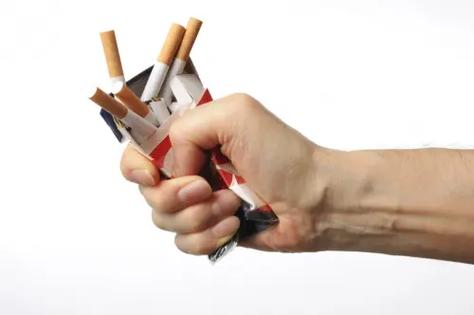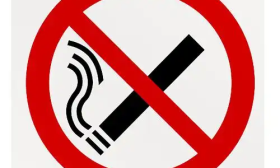A User-Friendly Guide to Preventing and Fixing Vape Battery Overcharging
We've all been there. You plug in your vape for the night, expecting a full, satisfying charge by morning, only to find a device that's hot to the touch, performing poorly, or worse—completely dead. This common scenario often points to one culprit: overcharging. While modern vapes are designed with some safeguards, understanding how to fix and, more importantly, prevent vape battery overcharging is crucial for both your device's longevity and your personal safety.
This isn't just about getting a few more puffs out of your device. It's about preventing potential hazards and ensuring your vaping experience remains consistently enjoyable. Let's dive deep into the world of vape batteries, demystify overcharging, and equip you with a complete toolkit of solutions and preventative strategies.
Understanding the "Why": What Exactly is Overcharging?
At its core, a vape battery is a lithium-ion cell. These batteries are fantastic for their high energy density but are also sensitive to how they're treated. Overcharging occurs when you continue to charge a battery after it has reached its maximum voltage (typically 4.2 volts for most vapes). Think of it like filling a glass with water; once it's full, any more you pour in just spills over and causes a mess.
In a battery, this "spillage" isn't water—it's electrical energy that gets converted into heat and causes internal chemical stress. Modern devices and chargers have a built-in protection called a "charging circuit" that is supposed to cut off the power once the battery is full. However, these circuits can fail, become less effective over time, or may not exist in cheaper, older, or poorly manufactured devices.
The Real Risks: More Than Just a Dead Battery
Ignoring the signs of overcharging is a gamble you don't want to take. The consequences range from mildly annoying to downright dangerous.
- Reduced Battery Lifespan: This is the most common outcome. Each overcharge cycle degrades the battery's internal components. You'll notice your vape doesn't hold a charge as long as it used to, forcing you to recharge more frequently until the battery becomes unusable.
- Performance Issues: An overcharged battery can lead to inconsistent power delivery. You might experience weak vapor production, a burnt taste, or your device cutting out unexpectedly during use.
- Swelling and Physical Damage: The excess heat and internal chemical reactions can cause gas to build up inside the battery, leading to swelling. A swollen battery is a major red flag and should be handled with extreme care.
- Overheating and Thermal Runaway: In the worst-case scenario, the excessive heat from overcharging can trigger an uncontrollable self-heating cycle known as thermal runaway. This can lead to the battery venting harmful chemicals, catching fire, or even exploding.
Your Action Plan: How to Fix an Overcharged Vape Battery
If you suspect your vape battery has been overcharged, here’s your immediate step-by-step guide.
Step 1: Safety First – Disconnect and Isolate Immediately unplug your vape from the charger. If the device feels unusually hot, place it on a non-flammable surface like a ceramic plate or concrete floor, away from anything that can burn. Do not put it in the freezer; rapid temperature changes can cause further damage.
Step 2: Inspect for Damage Carefully examine the battery (if removable) and the device. Look for any signs of swelling, leakage, discoloration, or a cracked casing. If you see any of these, do not use the device again. The fix for a physically damaged or swollen battery is replacement, not repair.
Step 3: The "Cool Down" Period Allow the device and battery to cool down to room temperature naturally. This might take a few hours. Do not attempt to use it during this time.
Step 4: Test Cautiously Once completely cool, try using the device. If it powers on and functions normally, you may have caught the issue in time. However, the damage might be internal. Monitor its performance closely over the next few charges. If you notice any of the performance issues mentioned earlier, the battery has likely been compromised.

Step 5: The Hard Reset (For Advanced Users with External Chargers) If you use an external battery charger and suspect a single battery is overcharged, a good quality charger with a digital display can be your best friend. It might show a voltage reading above 4.2V. Some advanced chargers have a "recovery" or "storage" mode that can safely discharge the battery back to a normal voltage. If your charger lacks this feature, it's safer to dispose of the overcharged battery properly.
Prevention is the Best Cure: Building Safe Charging Habits
Fixing an overcharged battery is reactive. The real solution is being proactive. By adopting these safe charging practices, you can virtually eliminate the risk of overcharging.
- Never Leave Your Vape Charging Unattended or Overnight: This is the golden rule. The safest practice is to charge your device when you are awake and able to check on it. Unplug it as soon as the indicator shows a full charge.
- Use the Right Charger: Always use the charger that came with your device or a manufacturer-certified replacement. Using a phone charger with a different amperage output or a cheap, off-brand cable can damage your vape's internal charging circuit.
- Invest in a Quality External Charger for Removable Batteries: If your vape uses external 18650, 21700, or similar batteries, a dedicated external charger is one of the best investments you can make. Look for brands like Nitecore, Efest, or Xtar. These chargers have superior safety features, including overcharge protection, automatic cut-off, and sometimes even voltage displays, allowing you to monitor your battery's health.
- Inspect Your Batteries Regularly: Make a habit of checking your batteries for any signs of wear and tear, especially the wrap. A torn battery wrap can cause a short circuit, even when charging.
- Charge on a Safe Surface: Always place your vape or charger on a hard, stable, and non-flammable surface while charging. Avoid charging on beds, sofas, or in direct sunlight.
- Understand Your Device's Indicators: Know what the different colored lights on your device mean. A light that stays solid green usually means "charged," not "charging." Leaving it plugged in after this point is unnecessary.
- Consider a Timed Outlet: A simple and effective tech solution is to use a smart plug or a simple outlet timer. You can set it to supply power for a specific duration (e.g., 2 hours) and then automatically shut off, providing a physical backup to electronic safeguards.
Addressing Related Concerns: Your Questions Answered
- "Can I use my vape while it's charging (pass-through vaping)?" While convenient, this practice puts significant strain on the battery and the charging circuit, increasing heat and the potential for failure. It's best to avoid it when possible.
- "How long should a vape battery last?" A well-maintained vape battery should last between 300 to 500 full charge cycles. Poor charging habits can cut this lifespan in half.
- "What do I do with a dead or swollen battery?" Do not throw it in the trash. Lithium-ion batteries are a fire hazard in garbage trucks and landfills. Take them to a designated battery recycling center or an electronics store that offers recycling services.
By treating your vape battery with care and respect, you are not just protecting your hardware; you are ensuring your own safety and guaranteeing a reliable, high-quality vaping experience every time you pick up your device. Embrace these habits, and you can say goodbye to the anxiety of overcharging for good.










